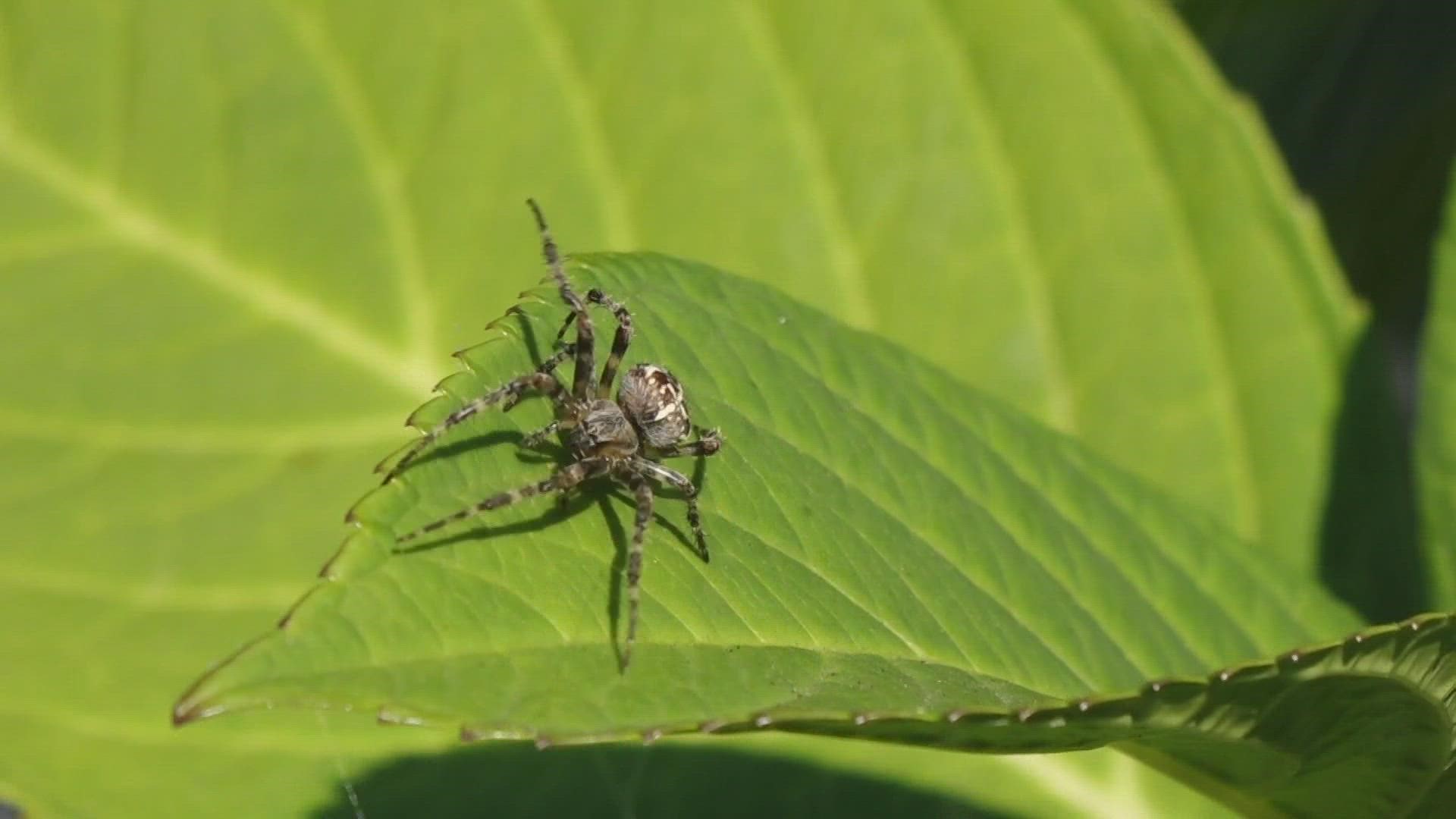SEATTLE — Just about everything you thought you knew about spiders is wrong.
That’s according to a local expert who just so happens to spend his days surrounded by more than 200,000 spiders.
Rod Crawford is the curator of arachnids at the University of Washington’s Burke Museum and has been on the job for more than 50 years. He knows how many urban legends tend to follow the Arachnids around.
“A spider is an arachnid but arachnid doesn’t mean spider,” said Crawford. Arachnid covers 11 joint-legged invertebrate animals including scorpions, mites, and even ticks.
Crawford said the seeming abundance of spider webs and even larger spider sightings indoors isn’t unusual this time of year and will peak next month. Giant house spiders reach maturity around this time of year, leading to more sightings. Mature males can frequently reach the size of a human palm.
"You can't get this big without eating a lot," Crawford said. "And what they eat is bugs. Do you want all those little bugs in your house? Spiders are the last thing to worry about."
If you do find a spider inside, it's best to leave them be. Many species of spider exclusively live indoors, and likely came as eggs in building materials.
"Don't just scoop them up and put them outside, because they never lived outside," Crawford said.
Dispelling myths about spiders has become a passion for Crawford. His website is filled with more than 75 common misconceptions and urban legends about spiders. The misinformation is a mixture of fear and fallacies according to Crawford.
The average person swallows seven spiders in their sleep? Daddy-longlegs spiders are among the most venomous? Most spiders get inside your house through the drain pipes? Black Widows eat their mates?
“All aint so!” said Crawford.
A common fear is the brown recluse spider, whose bite can have painful effects. However, the concern is unfounded, Crawford said. They don't live anywhere near the state.
"The number of brown recluses within a thousand miles of the state of Washington is zero," Crawford said.
Even fears about spider bites are usually unjustified.
"I've handled tens of thousands of live spiders with my bare hands, true spider bites are extremely rare events," Crawford said. “No spider in the Puget Sound area is dangerous to humans in anyway.”
Crawford estimates there are 968 species of spiders living in Washington State (and counting) and the only threat comes from the Black Widow that can live in Eastern Washington.
To learn more about the misunderstood world of Spiders you can visit Crawford's webpage linked to the Burke Museum.

